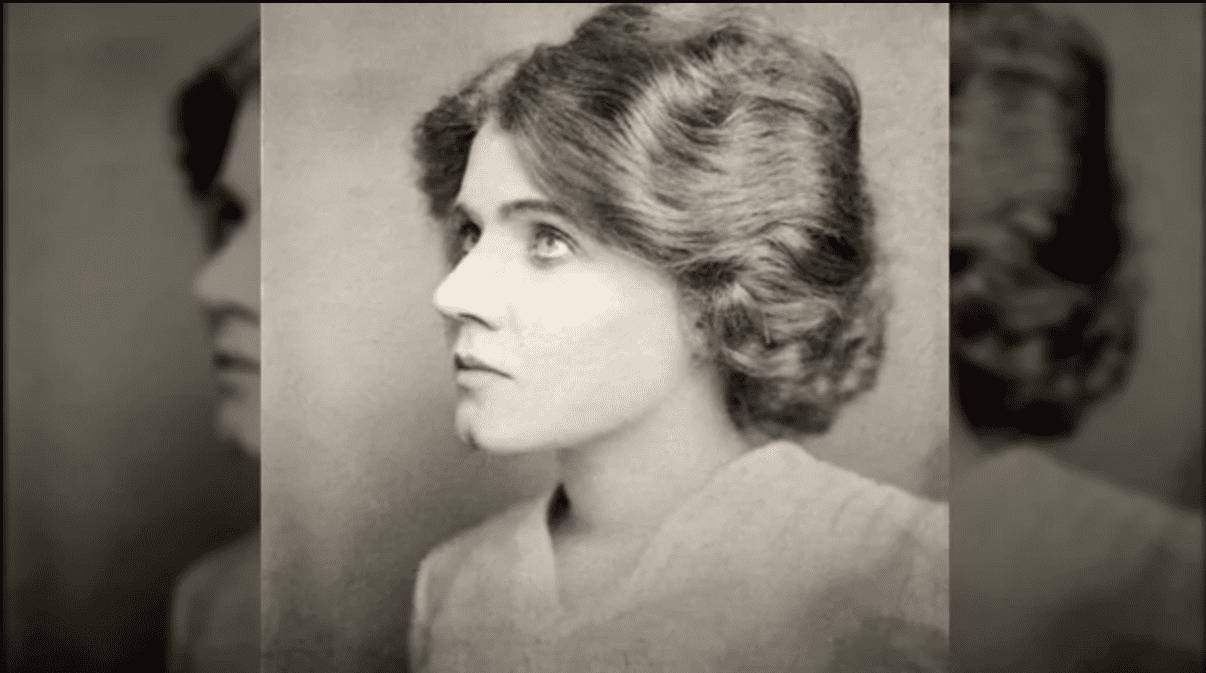‘First movie star’ Florence Lawrence was born in Hamilton more than 135 years ago
Published January 4, 2024 at 10:10 pm

The woman who would come to be considered the “first movie star,” actress Florence Lawrence, was born in Hamilton more than 135 years ago this week.
Lawrence would star in more than 300 silent pictures during her career, with a peak throughout the 1910s. It was long believed she was the first actor to be credited on screen, though that was proven incorrect in 2019. However, before her early Hollywood stardom, she was born to Vaudeville performer Charlotte “Lotta” Bridgwood on Jan. 2, 1886.
Bridgwood performed as Lotta Lawrence and ran the Lawrence Dramatic Company. The younger Lawrence, adopting her mother’s pseudonymous stage name, first appeared on stage at three, according to biographer Kelly Brown.
Lawrence began with song and dance routines and moved on to speaking roles once she was old enough to remember lines. While the family remained based in Hamilton, vaudeville performers travelled widely. In 1898, when Lawrence was about 12, her father George Bridgwood died of coal gas poisoning in his Hamilton home.
Following her by-then ex-husband’s accidental death, Lotta Lawrence moved the family to New York. Along with a new generation of Canadian film pioneers, Florence Lawrence began to appear in movies in 1906.
Other Canadian pioneers of the era include;
- Allakariallak, otherwise known as Nanook of the North (1922)
- Raymond Burr, of Perry Mason (1957-1966) and Godzilla, King of the Monsters (1956) fame
- Yvonne De Carlo, a prolific actress best known for Cecil B. DeMille’s The Ten Commandments (1956) and as Lily Munster in The Munsters (1964–1966)
- Marie Dressler, co-star of the first full-length comedy, Charlie Chaplin’s Tillie’s Punctured Romance (1914),
- Glenn Ford, long-time film noir star and Pa Kent in Superman (1978)
- Lorne Green, Commander Adama in the original Battlestar Galactica (1978-1979)
- Walter Huston, Oscar winner for his son John Huston’s The Treasure of the Sierra Madre (1948), patriarch of the Huston acting dynasty (including Anjelica, Danny and Jack Huston)
- Del Lord, prolific director of Three Stooges shorts (1935–1948)
- Louis B. Mayer, co-founder of MGM studio
- Mary Pickford, co-founder of United Artists Studio, Oscar winner for Coquette (1929)
- Walter Pidgeon, two-time Oscar-nominated actor
- Douglas Shearer, seven-time Oscar-nominated sound designer
- Norma Shearer, Oscar-winning actress for The Divorcee (1930)
- Jack Warner, president of Warner Bros. studios
- Joseph Wiseman, titular villain of the first James Bond film, Dr. No (1962)
These artists and many other Canadians worked to build up the American film industry from the ground up. Mayer, Pickford and Warner all helped found prolific studios. MGM and Warner Bros. (now WB-Discovery), remain in business. However, Pickford’s UA, founded in 1919 with Chaplin, D.W. Griffith and Douglas Fairbanks, was folded into MGM in 2019.
Lawrence however, bounced around a few companies in the late 1900s. including Thomas Edison’s. After her debut in 1906, she went on to appear in nearly 50 films in the next two years. She got so many roles thatnks to her versatility as a performer, but especially because she could ride a horse.
In 1908, Lawrence jumped to Biograph Pictures to work under prolific director D.W. Griffith. While Griffith is credited as one of the most influential, innovative and foundational filmmakers in the industry’s history, he also made The Birth of a Nation (1915). This most infamous Griffith film was a smashing success in its time, but its racist depiction of Black people and celebration of the Ku Klux Klan was then and remains highly controversial.
However, The Birth of a Nation came long after Lawrence’s work with Griffith. She instead starred in his early western The Girl and the Outlaw (1908). Following this film, she took on a job with Biograph for $25 a week (about $880 today). Griffith went on to make 60 movies in 1908 alone, most of which starred Lawrence.
This led Lawrence to develop quite a fanbase but since films of the era didn’t run actor credits, no one knew who she was. Biograph got a flood of fan mail asking for her name, especially after the major success of Griffth’s Resurrection (1909). However, the company refused to credit Lawrence instead calling her, “The Biograph Girl.”
This was commonplace in the era. Production companies thought crediting actors would garner them a fan base and allow the actors to demand more money. Lawrence proved this correct.
By the end of 1909, Lawrence and her husband, actor-director Harry Solter, began looking for work beyond Biograph. One of the companies they applied to instead told Biograph of the application, and got the pair fired. Despite that, they were soon picked up by Independent Moving Pictures (IMP), which would later be absorbed by Universal.
IMP and later Universal Studios founder Carl Laemmle promised Lawrence credit, and after faking her death by street car for a publicity stunt, announced Lawrence’s name to the world as alive and well…and working for IMP. She and Solter quickly got to work on two new projects.
Laemmle and Lawrence made a public appearance in St. Louis in March 1910, making her the first performer to be publically identified by her studio, hence her honorific as “the first movie star.” She and Solter worked with Laemmle at IMP for nearly a year and pumped out 50 flicks in that time.
When Lawrence left IMP, Pickford became their new “it girl” in 1910. However, Lawrence continued to work with Laemmle and in 1912 the pair negotiated her own studio; the Victor Film Company. Lawrence now had complete creative freedom and made a then-whopping $500 a week (or $16,324 in 2024 dollars). Lawrence was 26 years old.
Victor Film set up a studio in New Jersey and produced numerous successful films. She and Solter had begun to fight and split up after a big argument. The pair did briefly reunite a short time later. During this period Lawrence bought a ranch and declared her intention to retire.
Her studio’s independence proved short-lived though. In 1913, several smaller studios, including Laemmle’s, consolidated into Universal Pictures, leaving her little choice but to sell out. After a brief retirement, she returned to work at Victor within Universal.
However, her first production back was disastrous. She began work on Pawns of Destiny in 1915, but during production, a staged fire lost control. Lawrence was burned and her hair singed. She also suffered a severe fall that damaged her spine. She went into shock for a few months the returned to work. She collapsed once the film was completed.
She tried to make another couple comebacks in the later 1910s, but the work strained her health. She was paralyzed for a while after working on Elusive Isabel. Solter died of a stroke in 1920 at 46. Lawrence later remarried a car salesman, Charles Woodring.
She tried to relaunch her acting career in 1921, but a move to Hollywood netted her only one lead role. After 1924, all her roles were uncredited bit parts. Her acting career was effectively over at 38 years old. She had a couple of other major accomplishments left though.
She also developed an auto signalling arm, which would evolve into the modern turn signal and designed the first mechanical brake signal. However, she didn’t patent these inventions and made no money on them.
Lotta Lawrence died suddenly in 1929 leaving Florence devastated. She and Woodring split up months later and formally divorced in 1931. Though she’d made a fortune in her earlier film career, she made many bad investments.
When the stock market crashed in 1929 she lost just about everything, including a store she operated with Woodring. In 1933, she married Henry Bolton who became an abusive alcoholic. He frequently beat Lawrence and they separated after five months.
Louis B. Mayer, long-since head of MGM, started offering former silent film actors $75 a week ($1,709 today) for performance contracts. Lawrence signed on and stayed with the company until her death. According to Brown, she was diagnosed with “a bone disease which produces anemia and depression,” in 1937. This illness, likely myelofibrosis, caused chronic pain and fatigue.
On Dec. 28, 1938 she called in to MGM saying she was going to be out sick for the day. She then consumed ant poison. A neighbour found her and rushed her to the hospital where she died. She was buried in an unmarked grave in Hollywood Cemetery paid for by the charity Motion Picture & Television Fund. She was 52.
Her grave remained unmarked and anonymous until 1991 when an anonymous British actor, believed by some to be Roddy McDowell (perhaps best known for his recurring Planet of the Apes roles), paid for a gravestone.
It reads, “Florence Lawrence: The Biograph Girl/The First Movie Star.”
inthehammer's Editorial Standards and Policies advertising





